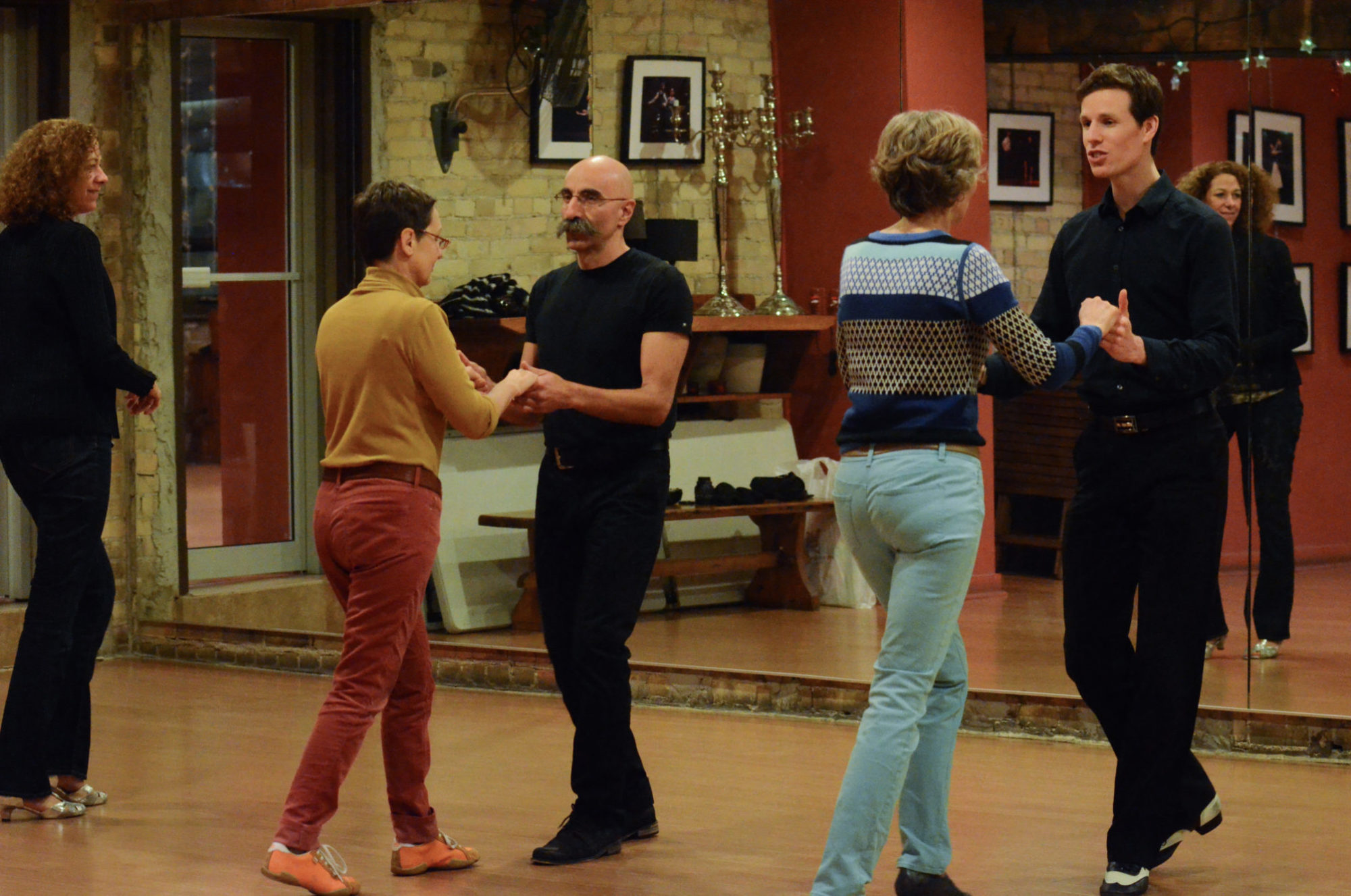One of the most frustrating barriers to becoming a great ballroom dancer is a lack of feeling for ballroom dancing music. You can know the moves, the technique, all of it, but if you can’t step on the beat or recognize where the ‘1’ is, everything still feels awkward.
Previously, I gave an overview on how to train your body to move to the beat of the music. Now let’s look deeper, at the musical patterns that every ballroom song shares. Because if we can identify those patterns, we will have our first clue for when to start and stay with the music. When understanding musical patterns, follow the following maxim: A repeat or a change in the musical pattern always corresponds to count ‘1’.
When talking about how to recognize musical patterns, we often refer to the energy of a song. Energy in music is a measure of the power, volume, and/or complexity of a song.
Usually the energy starts low (the introduction), builds to a crescendo (the chorus), and then waves up and down a few times before it fades out (the conclusion). Let’s look at the different patterns we encounter in ballroom dancing music, and how to identify them.
The Introduction
The opening, usually instrumental, before the first verse begins. The energy is at it’s lowest here, and builds towards the first verse, which begins with the introduction of a regular emphasis in the music, called a downbeat (often provided by a drum).
The Verses
The verses are the meat of ballroom dancing music, because they repeat several times throughout the song. If there are vocals, they begin on the first verse. Each verse has an underlying melody that repeats midway through the verse. Since the song either changes or repeats on the ‘1’, the beginning and midpoint of a verse are both good places to practice listening to.
The Build
The energy here begins to build from the verse towards the chorus, usually taking the same amount of time as a verse. Builds aren’t used in every song however.
The Chorus
The energy reaches its peak here. Remember that the energy in ballroom dancing music corresponds to changes to power, complexity and volume: This could mean extra instruments, multiple vocals in harmony (or a single vocal if there wasn’t one before), and/or a ‘swell’ in volume. It may last one or two verses, sometimes changing slightly on the second verse (for example, the chorus in Ellie Goulding’s ‘Lights).
'Lights'. Starting from the beginning of chorus.
The Bridge
Used to break up the repeating pattern of a song, a bridge is a section of music that is unique to either the verses or the chorus. The energy will be different too, often lower then a chorus, but higher then a verse, although it may dip below both for dramatic effect as with Florence and the Machine’s ‘Cosmic Love’. Since it’s meant to change the pattern, bridges appear in the second half of a song, often preceding the final chorus.
'Cosmic Love', starting from the last 8 count before the bridge.
The Conclusion
The energy comes back down to rest with the conclusion or outro, sometimes in the form of an instrumental solo, or a repeat-and-fade.
All this is well-and-good, but we’re still lost until we can connect what we’ve learned to actual music. So I’ve added several songs with an explanation of their structure below.
Next week, I’ll talk a bit more about ballroom dance music theory, and where music may break from the patterns we’ve talked about. In the meantime, start training those ears!
Mira Pa' Dentro - Introduction, first verse, chorus, second verse, chorus, bridge (extended), build-up, chorus, conclusion (abrupt).
Moscas en la Casa - Introduction, first verse, second verse, chorus, repeat intro, 3rd verse, chorus, bridge, final verse, conclusion.
Por Una Cabeza - First verse, second verse, chorus, third verse, fourth verse, chorus to conclusion (instrumental solo).
Dark Waltz - Intro (extended), first verse, second verse, chorus, repeat intro, third verse, fourth verse, chorus, repeat intro, 1st half of chorus, bridge, 2nd half of chorus, conclusion (instrumental solo).
Can You Do This - Intro (short), first verse, build, chorus, second verse, build, chorus, bridge, chorus, chorus, conclusion (instrumental solo).
If You Love Somebody Set Them Free - Intro, first verse, second verse, build, chorus, third verse, fourth verse, build, chorus, bridge, fifth verse, sixth verse, build, chorus, conclusion (repeat-and-fade).

A great article, feeling as if I am back in the music school 🙂